How much wood would a woodchuck chuck?
Well a wood chuck should never be judged on the quantity of wood just the quality of the said wood….and you definitely need to make sure your wood for burning is top quality stuff.
Another question we get asked all the time – and that’s fine – is “what kind of wood do you use, is it olive?” To be honest, no it’s not as we don’t live in a handy olive grove. Sometimes I think it would be nice if we did. Not that we’ve got anything against olive wood – it’s a dense, hard wood with a fantastically high calorific value. Well dried, it will burn hot and bright. And that’s what you need – a local hard wood which is well dried and well stored.
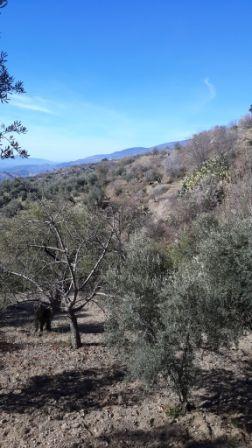
A handy olive grove – just not ours!
So what do we mean by well dried? Well it should have a moisture content of less than 20% and ideally around 15 %; to get this it should have been cut and split into manageable size logs and stored in a dry place for about 3 years. I say about because it will be less in a drier climate but here, in damp old Devon, 3 years is about right. More than that and the wood can start to become hard. We currently have some 5 year old oak and it’s like concrete. No wonder those oak framed buildings last for centuries.
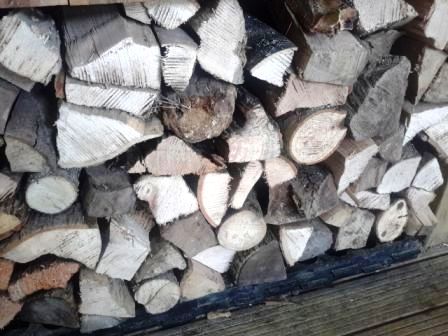
3 year old logs – under cover, ends exposed and plenty of room for air to circulate
Now as we’ve mentioned before, we’re super lucky in that Edward the farmer up the road (yes him with the chickens who produce our delicious eggs) knows what we want our wood for and will keep our wood to one side, away from the wood he sells for log burning stoves and regular fires.
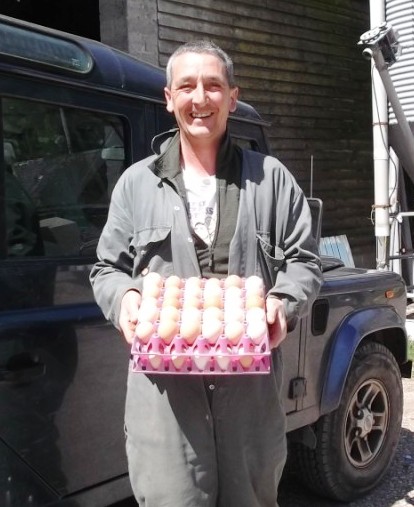
Edward and some of his eggs – he does logs too!
He gets his wood from trees that have been felled or have fallen around the village so we’ll get a mixture of oak, holm oak, chestnut, ash, beech and sycamore because that’s the hard wood that grows locally.
And I guess that’s where the olive wood obsession comes from – genereally we’ve all learnt about wood fired ovens from the Mediterranean and their wood of choice, or one of them, would be the olive logs from the olive groves, ie the local wood. However when we were travelling round the southern USA to find out about smoking, the choice of wood there was hickory, cherry, mesquite, oak….so exactly what hard wood grew locally. So don’t get too excited about spending a fortune on a pallet load of imported olive logs when you can get your own local hard wood much cheaper.
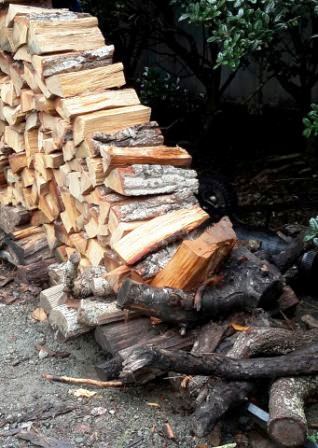
Neatly stacked logs for smoking in North Carolina – very pleasing! A mixture of local hard woods.
What you do want to get obsessed by is that moisture content because if it’s not dry, your wood is going to smoke and steam and not get up to temperature as the fire’s spending all its energy on making damp logs burn and not creating heat. You can see that if you put a damp log on the fire – the moisture rises up and steams away inside the oven. You can test the moisture content with a little gadget – it has 2 prongs that you shove into the wood and a reading comes up on a screen, the moisture content.
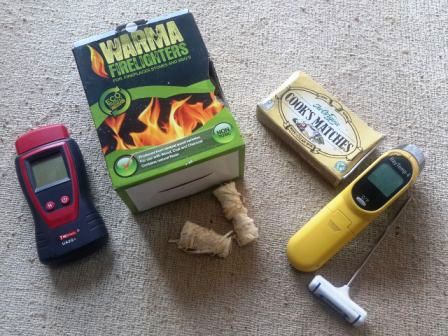
The moisture meter is on the left
Even if you buy well dried and stored wood, it is important that you store it correctly. Make sure it’s well stacked and air can circulate through the stack and the logs are end on. Don’t just leave them in a big heap!
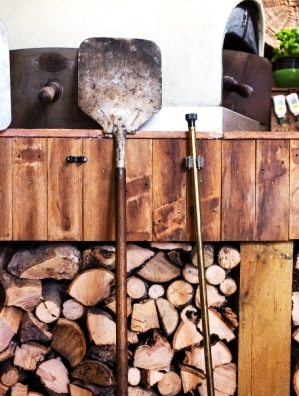
Plenty of undercover storage for wood is crucial
It’s also crucial that if you do build a good sturdy wood pile, it is under cover. There is a nicely stacked log pile up our road however it’s been left out in all weathers all winter long so that’s not going to create any meaningful heat once they come to burn it. Ours are stored underneath the wood fired ovens, underneath our pews along the wall of the kitchen and up the steps, all under cover – in fact any convenient covered space is full of logs! As the Scandinavians restock their wood piles in April for the next winter blast, so we try to get a good supply in to sit while we work through the current stock so we never run out and even though it’s well dried anyway, it will sit with us for another 6 months or so.

Log splitter and axe and a good block for splitting on
As we’ve mentioned before, make sure you have a good sharp axe and wood splitter to chop the logs into easily burning pieces – too big and again the fire will spend too much time and energy trying to set them alight. Little pieces are much easier to burn.
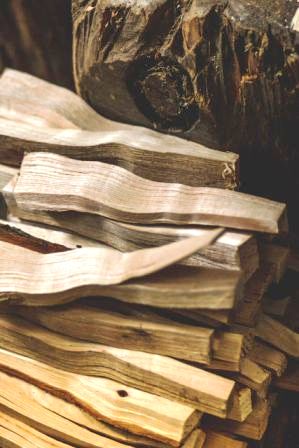
Nicely split kindling
So there you are, good to go – fire up the Quattro as they say and enjoy your cooking.
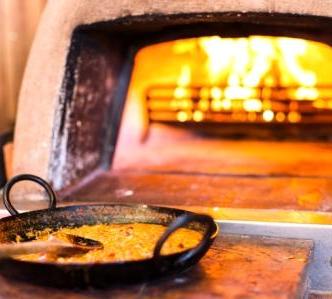
Ready to cook on a lovely blazing fire

